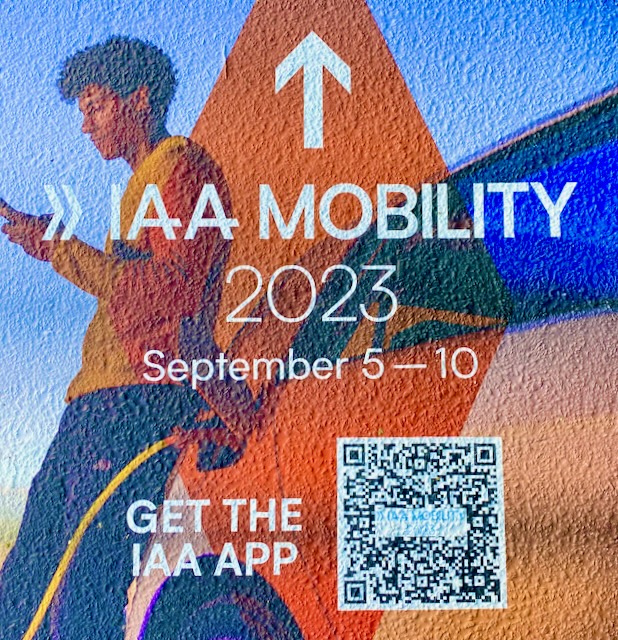The IAA Mobility 2023 is over. What was on display besides the ubiquitous electric cars? Here is my personal review of one of the world’s biggest mobility shows.
Mobility Concepts
The International Motor Show (IAA) is traditionally one of the biggest shows for new cars in the world. Starting in 2021, it is being held in Munich instead of its traditional location in Frankfurt. Since it moved to Munich, the IAA has been called the IAA Mobility – the second word emphasizing the claim to show not only the latest and greatest cars, but also new mobility concepts. I was mainly interested in this part. I wanted to see what new mobility concepts were being developed.
If you stroll through the halls of the New Munich Trade Fair Centre, you will find cars, lots of cars. All electric, of course. There were the booths of the big players and also many newcomers, mainly from China. Wedged between these big booths were suppliers of everything you need to build a modern car: Batteries, motors, microchips, glass, lights, and more. This is what you would expect to see at an auto show.
But in between, you could see some signs of alternative forms of mobility. The main category on display were cargo bikes. Some were equipped with storage space for last-mile deliveries. Others were designed to carry your own groceries, many variations on the concept of a cargo bike.
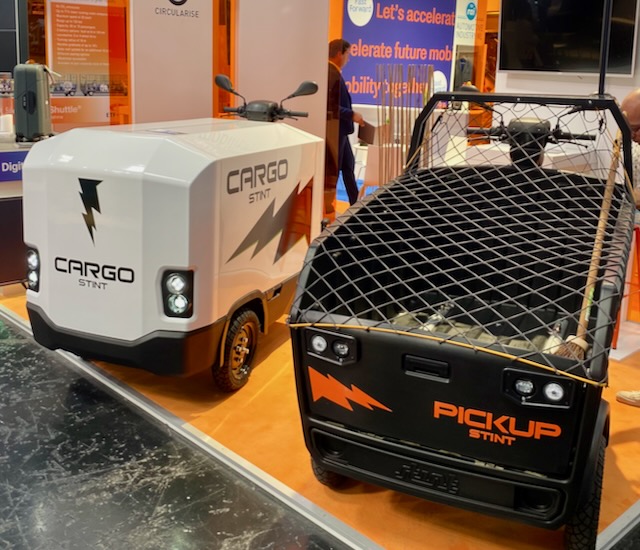
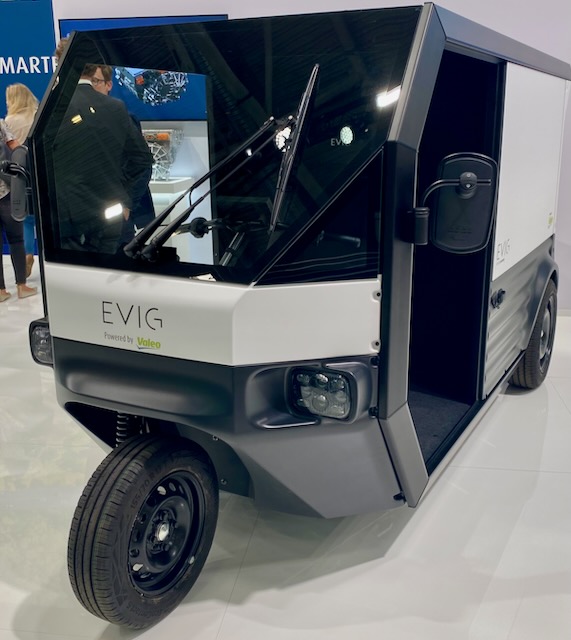
Another form of mobility on display were small autonomous buses. Many visitors seemed to like them, as they were always surrounded by people taking pictures (like me).
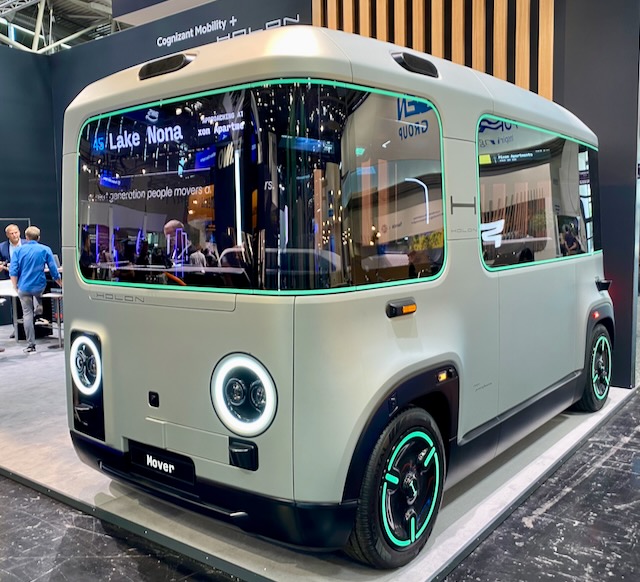
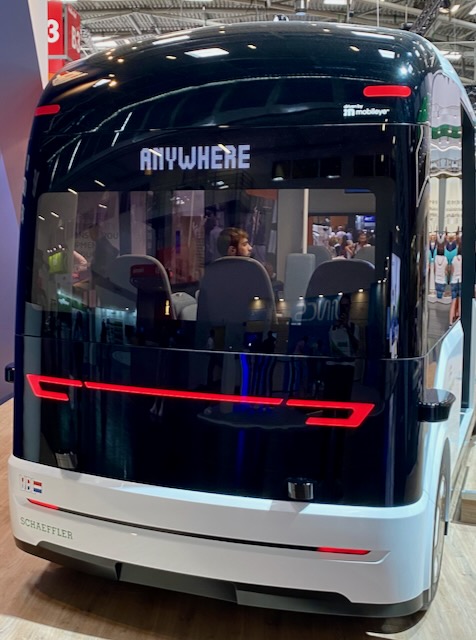
The Verkehrsbetriebe Ingolstadt (link) presented their pilot project for a bus-on-demand service that serves rural areas around Ingolstadt.
People can call a bus by phone or app and it will take them from a station near their home directly to their destination. The buses have no fixed lines. Instead, artificial intelligence algorithms calculate the optimal route for the bus on the fly. Riders pay only €1.50 for the service. The demand for this service is very high, especially among people who don’t own a car or can’t drive anymore.
The pilot project has shown that the concept works really well, but it needs a lot of subsidies as the operation is quite expensive.
In the Open Space in the center of Munich you could have a look into a possible future of transportation (or another Gadgetbahn?). The team from the Technical University of Munich (link) presented their Hyperloop capsule, which completed the first passenger ride of a Hyperloop project worldwide. Many people lined up in the hot September afternoon sun to get a first look inside the capsule.
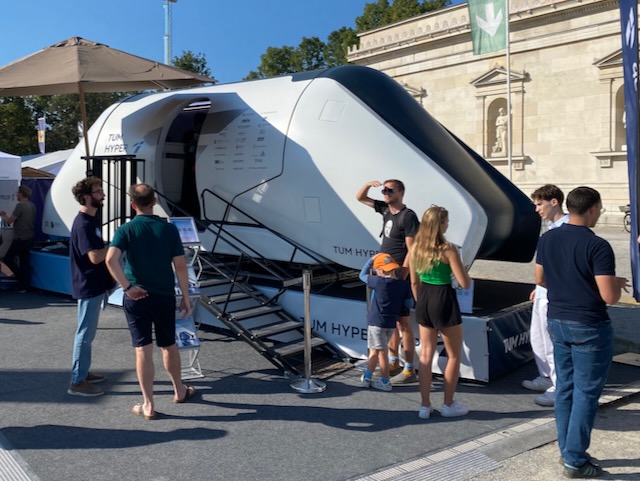
Another research project in Munich that sounds a little less like science fiction was the idea of platooning (link). The plan is to have two buses driving directly behind each other, with the second bus following the first one in a very close distance of about 3m. It is planned to do this completely autonomously. There will be only one driver in the first bus.
This plan is being pursued by the city of Munich because the number of passengers in the growing city of Munich can no longer be handled by normal buses. The transit authority already uses special passenger trailers, but they cannot be uncoupled during off-peak hours and are too heavy to be used with electric buses. Munich’s MVG is therefore investigating this new technology.
Comparison with the IAA 2021
When I compared this IAA Mobility to the last one two years ago, I saw a few things missing that were on display in 2021.
In 2021, one topic that was really big was electric air taxis. Back then you could see prototypes of several concepts. This time there was not a single example of this completely new category. I wonder why, because interest in this technology is high and startups working on this technology are popping up all over the world.
Another interesting concept that could be found in 2021 were new airports for electric planes that would connect regional cities. The idea was to use electric planes that could use a shorter runway because they could climb or descend at a higher angle than conventional planes. And these shorter runways could be built on top of existing infrastructure, like railroads or highways.
This would have allowed these airports to be located closer to city centers, thus reducing travel time from center to center.
Unfortunately, I could not find the link to this concept anymore. If any of you remember, I would be very happy if you could post the link in the comments.
I was also surprised to see that autonomous driving was not a big topic. None of the car companies had any big announcements. This is also somewhat different from 2021, where plans for autonomous driving were very prominently presented, and some companies also showed live demos of automated valet parking (link).
Such innovative ideas were not to be found at the IAA 2023. All that was shown were already known concepts.
Conclusion
One thing the IAA 2023 clearly proved was that electric vehicles are now ready for the mass market. All brands – old and new – showed a wide range of electric vehicles. But I was looking for new ideas outside of the well-trodden paths of the autonomous industry. While there were a few alternative concepts, none of them were really new or exciting. Compared to 2021, the show was much less innovative. I wonder if this lack of innovation was caused by the lack of success of these new concepts in the market, or if it was a decision by the IAA managers to focus more on cars. Either way, if you are looking for new ideas in transportation and mobility, you need to cast a wider net and not rely on shows like the IAA.
